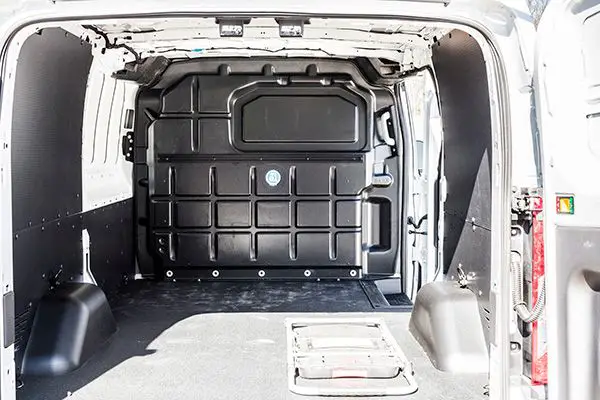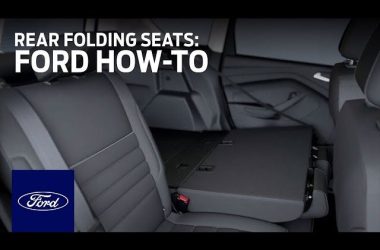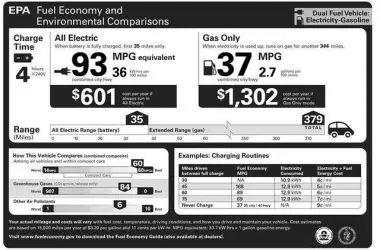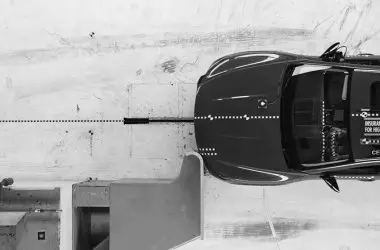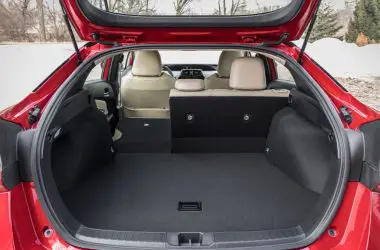Vehicles are full of noises from various sources, including the engine, road, wind, and tires. While the passenger cabin is designed for comfort, cargo areas often lack acoustic treatments, resulting in loud and distracting sounds. Isolating noise from the cargo space provides numerous benefits, but can be challenging due to the large open volumes.
Cargo areas have hard, reflective surfaces that allow noise to reverberate, becoming amplified and bothersome. Common sources include the rear suspension, exhaust, and turbulence from airflow. Reducing noise makes driving more enjoyable, and allows passengers to converse normally and listen to music.
Effective acoustic isolation requires an understanding of noise transmission paths, materials, isolation versus absorption, and cost/complexity tradeoffs. This article will provide an overview of techniques and considerations for isolating noise from cargo spaces in passenger vehicles.
Sources of Noise in Cargo Areas
The most common sources of noise that can be heard in the cargo area of a car are engine noise, exhaust noise, suspension noise, and tire noise. Engine noise, like vibration from the engine or exhaust noise from the muffler and tailpipe, can transmit through the body of the vehicle and be audible in the cargo area (Source). The engine and exhaust system are located at the front of the vehicle, so their noises have to travel rearwards to reach the cargo space. Suspension and tire noise come from the wheels and suspension components underneath the vehicle. As the wheels and suspension move when driving over bumps and uneven road surfaces, they generate noise that propagates through the frame and into the cargo area (Source). These noises tend to be most noticeable when turning, braking, or traveling over uneven terrain. The cargo area is vulnerable to these noises because it is at the rear of the vehicle, farthest from the sound sources at the front.
Effects of Cargo Noise
Noise from the cargo area can have negative effects on passenger comfort in the cabin. Studies have shown that exposure to excessive noise from the trunk and cargo areas can lead to fatigue and discomfort for passengers (Pennig, 2012). The noise makes it more difficult for passengers to relax, sleep or carry on conversations. It also makes it harder for passengers to listen to music or audio entertainment due to the intrusive background noise.
According to research by Pennig (2012), higher noise levels in the cabin have been found to directly correlate with lower passenger acceptance and comfort. The noisy environment leads to increased fatigue, annoyance, and interference with activities like reading or listening to music. This demonstrates the importance of mitigating noise from the cargo area, as it has a direct impact on the passenger experience.
Overall, noise transmitted from the cargo space into the cabin can cause significant passenger discomfort, conversation interference, and audio entertainment disruption. Isolating this noise should be a priority for automakers looking to optimize the passenger experience.
Sources:
[1] Pennig, S. (2012). Effects of aircraft cabin noise on passenger comfort. https://pubmed.ncbi.nlm.nih.gov/22849320/Noise Isolation Materials
There are several common materials used for noise isolation in cargo spaces of cars:
Sound deadening mats made of butyl rubber are very effective for damping noises and vibrations. The material is often applied to the sheet metal in cargo areas. According to B-Quiet, their sound deadening mats can improve audio quality and reduce road noise by up to 18dB.
Closed cell foam is lightweight and can absorb medium and high frequency noises effectively. Soundproof Cow recommends polyurethane-based closed cell foam for noise control applications in vehicles.
Mass loaded vinyl is a dense, heavyweight vinyl material that blocks sound by its sheer mass. It is commonly used on floors and wheel wells of cargo spaces. Mass loaded vinyl is effective at reducing low frequency noises from sources like the engine and exhaust.
Applying Materials
Proper application of noise isolation materials is crucial for reducing noise from the cargo area. Professional installation is recommended to ensure full coverage without gaps. The installer should carefully measure the cargo area walls and floor to calculate the amount of material needed. It’s important not to skimp on material, as full coverage is key.
The installer will clean the cargo area surfaces thoroughly before applying the materials. The sound deadening mats or sheets will be cut to size and applied starting from the bottom up. Each piece should be pressed firmly in place, working out any air bubbles. If self-adhesive, the backing will be peeled away as the material is applied section by section.
If using a spray-on deadener like Boom Mat, it is sprayed on evenly according to the product directions. Multiple coats are likely required for maximum effectiveness. Sprays allow reaching into crevices conventional mats can’t cover.
Seams between pieces of material should be tightly sealed, as gaps will compromise noise isolation. The installer may use an aluminum seam tape for the best bond. The tape also helps reflect noise. Once applied, the materials should not shift or lift. The result is a cargo area fully cocooned in noise-blocking materials.
Isolation vs Absorption
There is an important difference between isolating noise and absorbing noise when it comes to reducing noise in cargo spaces. Sound isolation refers to blocking sound waves from transmitting from one space to another. According to Soundproof Cow, sound isolation materials create a barrier that stops sound transmission. This is effective for reducing noise from entering or exiting the cargo area.
Sound absorption, on the other hand, involves materials that soak up and dissipate sound energy within a space to prevent echo and reverberation, as explained by Nova Acoustics. Absorptive materials are useful for controlling noise inside the cargo area itself. While isolation blocks exterior noise, absorption manages interior reverberations.
For cargo spaces, a combination approach is best – using sound isolating barriers like vinyl or closed cell foam to prevent noise transmission from the cabin, while also utilizing sound absorption panels made of mineral wool or polyurethane to control noise resonance within the enclosed cargo area.
Treatments for Specific Noises
Engine noise can be particularly disruptive in cargo areas since the rear of the vehicle is located closer to the engine. Installing mass loaded vinyl or closed cell foam in the rear wheel wells and trunk can help absorb engine noise before it enters the cabin 1. Lining the trunk floor with thick carpeting or even temporarily using a folded up blanket can also reduce engine noise transfer.
Tire and road noise often enters through unprotected panels in the rear like the trunk floor and side panels. Applying vibration damping material to these surfaces will limit noise entering the cabin. Sealing any gaps or holes with acoustic caulk will also prevent road noise intrusion 2.
For suspension and impact noises from items bouncing around in the cargo area, closed cell foam lining can absorb the energy. Strategically placed foam pads under the trunk floor near the rear wheels can target suspension noise as well. Securing cargo properly using cargo nets or tie downs will reduce unwanted rattling.
Cargo Space Design
The design of the cargo space itself can have a significant impact on reducing noise. Careful shaping of the walls and floor using angled surfaces or curves can help prevent standing waves and flutter echoes that amplify noise. Adding ribbing, baffles or diffusers on the panels can also help scatter sound waves.
Applying sound absorbing materials like closed cell foam or fiberglass on large flat areas can dampen noise by converting acoustic energy into heat. These materials work best when placed on parts of the cargo area that tend to vibrate or resonate. Areas to target include the rear hatch, side panels, wheel wells and floor.
According to discussions on the Ioniq Forum, the poor hatch design on some models leads to rattles, indicating a need for revisions. Meanwhile on the Bronco Sport Forum, owners identified plastic trim pieces that flap and cause noise at certain speeds.
Overall, a holistic approach to cargo space design is needed, integrating acoustic principles from the start. This requires collaboration between designers, engineers and sound experts to optimize noise isolation.
Active Noise Control
One high-tech way to reduce noise in the cargo area is through active noise control. This involves using special audio speakers and electronic processing to actually cancel out unwanted noise.
Noise-cancelling speakers work by producing a sound wave that is the inverse of the incoming noise wave. When the two sound waves combine, they effectively cancel each other out through destructive interference, creating silence.
To make this work, there are a few components involved:
- Microphones placed in the cargo area detect the incoming noise.
- A digital signal processor analyzes the noise and calculates the inverse wave needed to cancel it.
- Noise-cancelling speakers mounted in the cargo area play the calculated anti-noise waveform.
- This creates destructive interference and cancels the noise within the cargo space.
The processing has to happen extremely fast to cancel noise effectively. But with modern digital signal processing chips, active noise control can adapt in real-time to cancel varying noise in the cargo compartment. This creates a quieter environment without needing extensive passive damping treatments.
The main downside is cost, since it requires specialized speakers and electronics. But for luxury vehicles focused on comfort, active noise control may provide the most advanced noise reduction solution. With more research, it could become a common feature in future cargo vehicles.
Costs vs Benefits
Reducing noise in car cargo areas comes with both costs and benefits that automakers must weigh. Added soundproofing materials and design changes add cost and weight, while reducing noise provides benefits to drivers and passengers. There is often a tradeoff between noise reduction and minimizing added weight and manufacturing complexity.
According to a cost benefit analysis from the Victoria Transport Policy Institute, noise reduction features in vehicles cost an average of 0.1 to 2 cents per vehicle mile, with greater noise reduction requiring higher costs. Each 5 decibel (dB) reduction in interior noise levels costs approximately $50 in manufacturing costs per vehicle. However, reducing noise provides benefits such as increased comfort and less driver fatigue that can be valued at $1 to $3 per decibel of reduction.
Automakers must balance the benefits of quieter rides with the costs of heavier materials and more complex designs. Lighter materials like plastic and fiberglass can reduce weight, and aerodynamic shaping of body panels can dampen noise with minimal cost increases. Features like active noise cancellation are effective but add electronics and weight. Overall, the most cost-effective approaches balance respectable noise reductions with affordable, lightweight materials and smart acoustical engineering.
